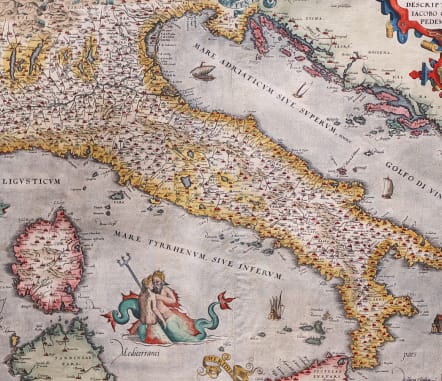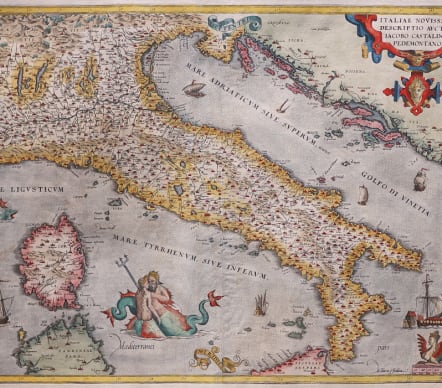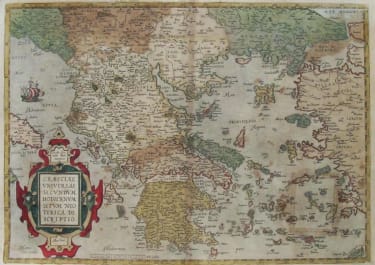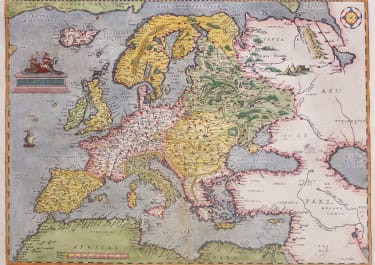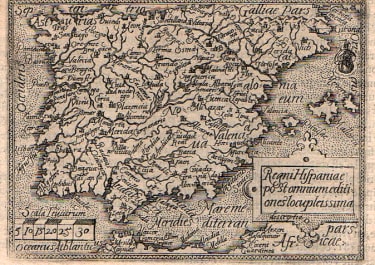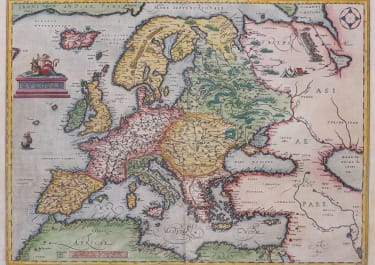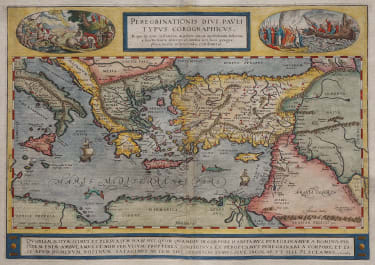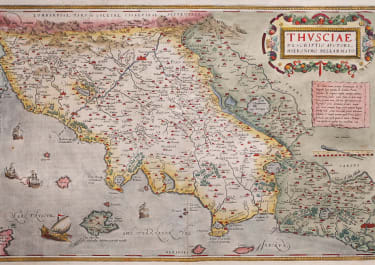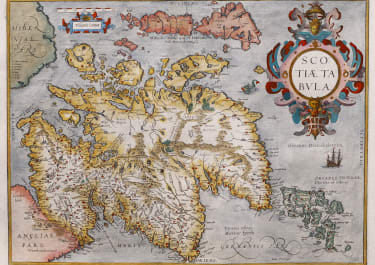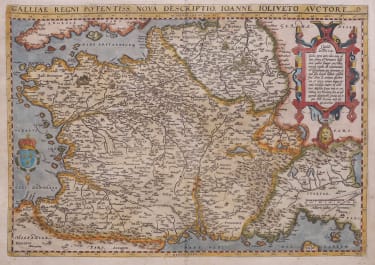ITALIAE NOVISSIMA DESCRIPTIO AUCTORE IACOBO CASTALDO PEDEMONTANO
£975
First edition Ortelius map of Italy.
Beautiful map of Italy from the 1584 Latin edition of Abraham Ortelius’ landmark atlas Theatrum Orbis Terrarum, the first modern atlas of the world.
This map, which was included in the Ortelius atlas since it was first published in 1570, is based on the cartographic work of Giacomo Gastaldi done in the mid 16th century. Decorated with an image of Nepune embracing a mermaid, sailing ships and a sea monster, the map includes the entire island of Corsica as well as portions of Sardinia, Sicily, France, Switzerland and the eastern Adriatic coast.
A description of the region appears on the verso in Latin.
Good strong impression
Excellent hand colour
Near mint condition
References: Van der Krogt 3 - 7000:31B; Van den Broecke - #118
code : M5422
Cartographer : Ortelius Abraham
Date : 1584 Antwerp
Size : 36*51 cms sheet size 44*57 cms
availability : Available
Price : £975
From about 1560, possibly as a result of his friendship with Mercator, Ortelius began to produce maps - an eight sheet world map being the earliest. At this time, Ortelius also began preparing his greatest project, the Theatrum Orbis Terrarum. Having already become probably the greatest cartographic bibliographer of the period, Ortelius was able to prepare 53 map sheets based on the most up-to-date information, which were engraved by Frans Hogenberg, and first published in 1570.
The atlas achieved instant fame as "the world's first regularly produced atlas" (Skelton), being the first atlas with maps prepared to a uniform format. It was also an immediate commercial success, being reprinted four times in 1570. . Over 30 different editions, with text in Latin, French, Dutch, German, Italian, English or Spanish, testify to the popularity and esteem attributed to the work. Marcel Van Den Broecke, whose fascinating work on Ortelius and his maps is often quoted, estimates that around 7300 complete atlases were published using a total of 234 copperplates, either replacements or reworkings as plates became out-dated, worn, or as new information became available. Amongst this latter category, the maps added in the 1580's and 90's of the world, the Americas, China, the Pacific, Japan, Peru and Florida, and Iceland are important historically and justly famous.The maps themselves are finely engraved, often very decorative and generally found with text on the reverse.
After Ortelius' death in 1598 the atlas continued to be printed and published by the Plantin Press. Between 1602 and 1609 it was published by Johann Baptist Vrients, who added a variety of fine maps including the very decorative large plates of England and Wales, and of Ireland. Publication reverted to the Plantin Press, under the control of the Moretus brothers, from 1612.
Although only the relatively unsuccessful atlases of De Jode and, ultimately, Mercator were published during the sixteenth century life of the Theatrum …, in 1607 Jodocus Hondius's issue of Mercator's Atlas ... with many newly prepared maps began to supersede Ortelius' work.
Ortelius's small Atlas The Epitome published from 1590 ran for many editions and was very popular.


